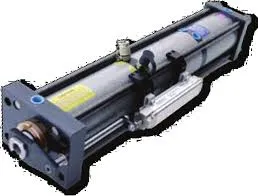Dec . 09, 2024 17:38 Back to list
How to Accurately Measure a Hydraulic Cylinder for Optimal Performance
Measuring a Hydraulic Cylinder A Comprehensive Guide
Hydraulic cylinders are vital components in various industrial applications, serving as the muscle behind countless machines. From construction equipment to manufacturing tools, understanding how to measure a hydraulic cylinder is essential for maintenance, replacement, and performance optimization. This article will discuss the key aspects involved in measuring a hydraulic cylinder effectively.
Understanding the Hydraulic Cylinder
Before diving into measurements, it’s important to understand the basic components of a hydraulic cylinder. A hydraulic cylinder typically consists of a cylinder barrel, piston, rod, and end caps. The barrel holds hydraulic fluid, and as pressure is applied, the piston moves within the cylinder, converting hydraulic energy into mechanical movement. The dimensions of the hydraulic cylinder directly affect its performance, making accurate measurements crucial.
Key Measurements
1. Bore Diameter The bore diameter is the internal diameter of the cylinder barrel. This dimension is critical as it influences the force output of the cylinder. To measure the bore diameter, use a caliper or an inside micrometer. It's essential to take multiple measurements at different points along the bore to ensure accuracy, as manufacturing defects can sometimes create inconsistencies.
2. Rod Diameter The rod diameter is the thickness of the piston rod extending from the cylinder. Like the bore, the rod diameter affects the overall strength and functionality of the hydraulic cylinder. Use a caliper to measure the rod diameter, and again, take multiple readings along the rod's length to account for any wear or inconsistencies.
3. Stroke Length The stroke length is the distance the piston travels within the cylinder and is critical for ensuring the cylinder operates within its intended range. To measure the stroke length, first extend the piston fully and then measure the distance from the fully retracted position to the fully extended position using a tape measure. This measurement is vital for applications requiring specific ranges of motion.
measuring a hydraulic cylinder product

4. Overall Length The overall length of the hydraulic cylinder is the total length from one end to the other, including the rod and any end caps. This measurement is often necessary for ensuring compatibility with mounting brackets or fittings. Use a tape measure to determine the overall length, ensuring that you measure straight along the centerline of the cylinder.
5. Mounting Style It’s also essential to consider the mounting style of the hydraulic cylinder during measurement. Common mounting types include pivot, flange, and trunnion mounts. Familiarizing yourself with the type of mount used can help in assessing the cylinder's fit within a larger assembly or system.
Importance of Precision
When measuring a hydraulic cylinder, precision is key. Even minor discrepancies in measurements can affect the performance and safety of hydraulic systems. If a cylinder needs to be replaced, accurate measurements ensure that the new cylinder fits properly and operates effectively. Additionally, when making repairs or modifications, precise measurements contribute to enhancing the overall performance of the equipment.
Practicing Safety Measures
While measuring hydraulic cylinders, it is crucial to adhere to safety protocols. Always ensure that the hydraulic system is depressurized before taking any measurements to prevent potential accidents. Wearing appropriate personal protective equipment (PPE) is also recommended to protect against any unexpected fluid release or component failure.
Conclusion
Measuring a hydraulic cylinder involves several key dimensions, including bore diameter, rod diameter, stroke length, and overall length. Understanding these measurements and their importance will not only assist in maintenance and replacement but will also ensure optimal performance of the hydraulic system. By practicing precision and adhering to safety measures, you can effectively manage the integrity and functionality of hydraulic cylinders in any application.
-
Fork Lift Power Units - Hebei Shenghan | Efficiency, Reliability
NewsJul.13,2025
-
1.5-Ton Turbocharged Cylinder-Hebei Shenghan|Hydraulic Solution,Energy Efficiency
NewsJul.13,2025
-
Auto Hoist Power Units-Hebei Shenghan|Efficiency&Industrial Lifting
NewsJul.13,2025
-
Double Acting Power Units-Hebei Shenghan|Hydraulic Solutions,Industrial Efficiency
NewsJul.13,2025
-
1.5 Ton Lifting Cylinder 70/82-40-290-535 - High-Performance Hydraulic Solution | Hebei Shenghan
NewsJul.13,2025
-
Fork Lift Power Units - Hebei Shenghan | Efficiency&Reliability
NewsJul.13,2025
